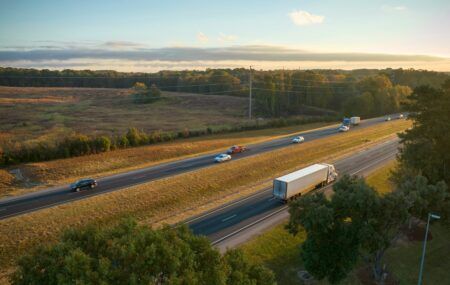As the government and local authorities move to reduce the effects of vehicle emissions, the UK’s first ever high resolution nationwide map of air pollution, MappAir, has been updated to include PM2.5 small atmospheric particles that can get into the lungs causing serious health problems.
Created by air quality monitoring, measuring and modeling specialist EarthSense, the, MappAir 2.0 now includes PM2.5, as well as nitrogen dioxide (NO₂) levels for the whole of the UK at 100m-resolution (328ft). A joint venture between aerial mapping company Bluesky and the University of Leicester, EarthSense has used complex modeling techniques to create the highly accurate map combining data from satellites, its own network of Zephyr air quality monitoring sensors, and other published datasets.
The MappAir platform is being increasingly used by cities and local authorities across the UK as they look to identify areas of poor air quality, for forecasting, planning or determining clean air routes or Clean Air Zones (CAZs).
In addition to satellite and traffic data used in the original MappAir product, the upgraded Version 2.0 uses the UK government’s Automatic Urban and Rural Network (AURN) air quality data, as well as non-traffic sources such as the National Atmospheric Emissions Inventory (NAEI).
MappAir 2.0 also considers the effect of topology and includes factors that determine how pollution behaves, for example slopes or depressions. The combination of data sources used make MappAir 2.0 a sophisticated service that will be further enhanced to deliver nationwide near real-time, historical and forecasting abilities in subsequent releases.
Particulate Matter (PM) is microscopic solid or liquid matter suspended in the Earth’s atmosphere. Sources of PM can be natural or man-made and they have impacts on climate and precipitation, and can adversely affect human health. PM2.5, now included in MappAir 2.0, is defined as ‘ultra-fine’, with particulate matter around 3% of the diameter of a strand of human hair. PM2.5 are so small they can only be detected with an electron microscope, but can easily get into lungs, contributing to respiratory infections, cardiovascular problems and even premature death.
“Feedback from existing users of MappAir, including the Fighting for Air campaign where we worked with the BBC and the King’s Heath community in Birmingham resulting in over 1.5 million air pollution map look-ups, showed that while the original MappAir product was a first in terms of air pollution mapping, there was scope for further development,” explained Tom Hall, managing director of EarthSense.
“MappAir 2.0 is unique. There is no other product available that offers this level of detail in terms of resolution, data sources, validation and application. MappAir 2.0 provides access to NO2 and PM2.5 annual average data for the whole of the UK, right down to street corner or postcode level and now, another first, includes it owns combined air quality index for both pollutants.”




